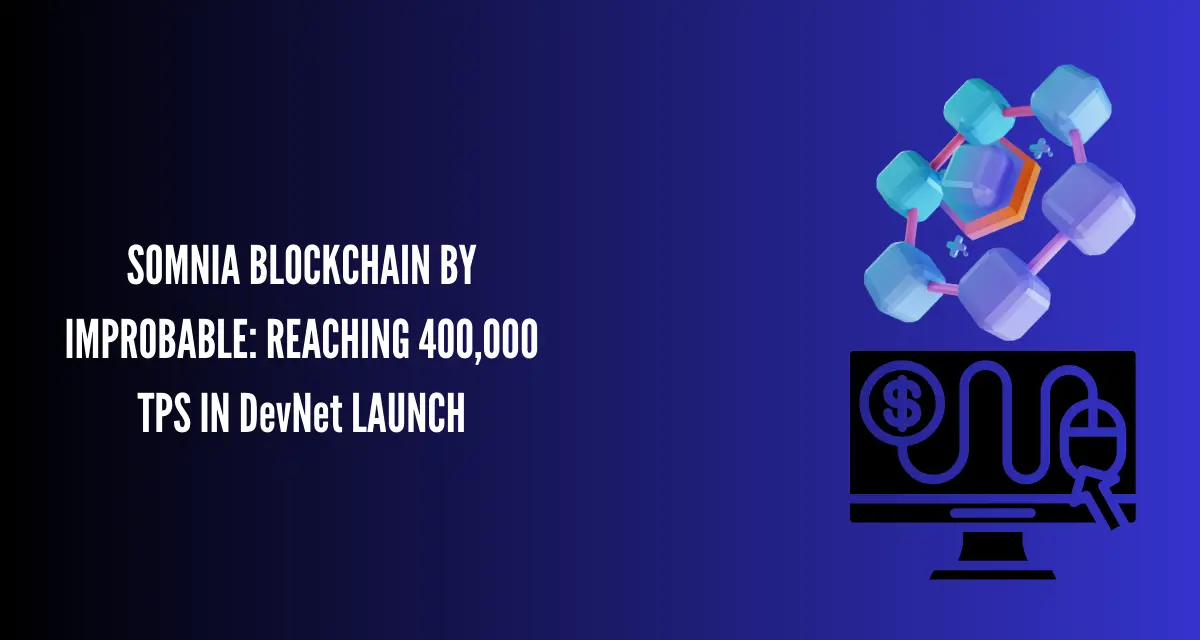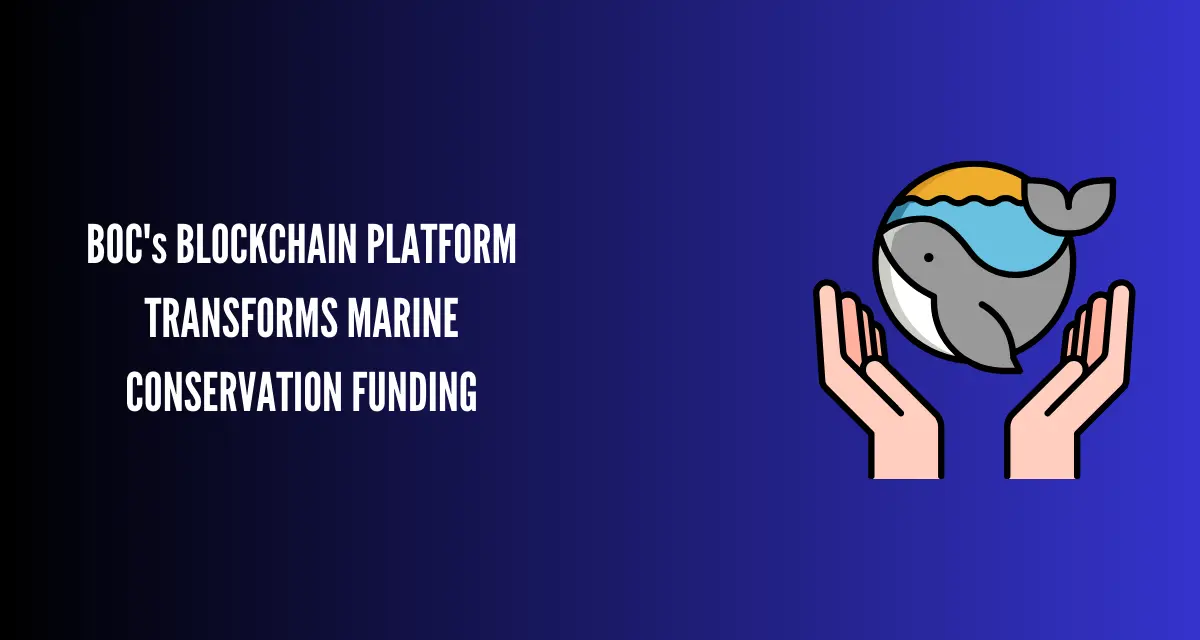Hey there, digital marketing enthusiasts!
Are you diving into the vast ocean of content creation, trying to make waves with your brand? Well, you’re in the right place! Today, we’re beginning on an exciting journey to explore how ChatGPT can be your ally in creating content that not only sings but also dances around Google’s spam filters with grace.
In the digital marketing world, content is not just king; it’s the entire kingdom. But here’s the catch – creating content that stands out while keeping Google’s ever-watchful eyes happy is a tightrope walk. And with the recent updates from Google, that rope seems to be getting tighter, especially for AI-generated content.
So, grab your digital surfboard, and let’s ride the wave of AI-generated content together, making sure we’re all geared up to meet Google’s standards head-on. Ready? Let’s dive in!
How ChatGPT Revolutionizes Content Creation
ChatGPT is changing the game in digital marketing by making content creation easier, faster, and more creative. Let’s quickly dive into how it does this and why it’s becoming an essential tool for producing amazing content for your website.
Quick Understanding, Quick Results
ChatGPT works by taking your input, understanding the context, and generating text that feels human-like. This means you can get drafts, ideas, or even full articles that closely match what you’d write yourself, but in a fraction of the time.
Adapts to Your Style
Whether you need a formal report or a casual blog post, ChatGPT can adjust its tone to fit your needs. This adaptability ensures the content it produces aligns with your brand voice and resonates with your audience.
Boosts Creativity and Saves Time
With ChatGPT, you’re not staring at a blank page wondering where to start. It offers suggestions and content that can spark your creativity, allowing you to focus on refining and enhancing your ideas. This not only saves time but also opens up new possibilities for creative content.
Collaboration is Key
While ChatGPT is powerful, the best content comes from a mix of AI efficiency and human insight. Using ChatGPT is like having a collaborative partner that helps you draft and refine content, ensuring the final output is both engaging and tailored to your audience.
Producing Amazing Content
The real magic of ChatGPT lies in its ability to produce content that meets the high standards of your website. By understanding your needs and offering creative, and efficient content solutions, ChatGPT helps you maintain a dynamic and attractive online presence.
Understanding Google’s Latest Update on AI-Generated Content

Google has been refining its approach to AI-generated content, focusing on quality and user benefit rather than the method of content creation. The company emphasizes the importance of high-quality, people-first content that demonstrates expertise, experience, authoritativeness, and trustworthiness (E-E-A-T), regardless of whether it is produced by humans or AI. Content aimed solely at manipulating search rankings, however, is a violation of Google’s spam policies (Search Engine Journal).
One key aspect of Google’s guidance is the proper use of AI in content creation. It suggests that AI should be viewed as a partner rather than a replacement for human creativity and original thought. AI tools are best used to overcome common writing barriers and enhance content rather than create it wholesale. Creators are discouraged from relying heavily on AI for content generation or for conducting research, pointing out the importance of starting with solid research or firsthand experience to ensure content depth and quality (Search Engine Land).
The March 2024 Core Update by Google targets reducing low-quality, unoriginal content in search results by 40%, introducing new spam policies that aim to combat manipulative practices such as scaled misuse of content, misuse of site reputation, and misuse of expired domains. This update is part of Google’s ongoing efforts to improve the quality of information available through its search engine (Search Engine Journal).
Google also clarified that AI-generated content is not inherently against its guidelines, provided it’s used responsibly and not for the primary purpose of manipulating search rankings. The use of AI to assist in creating useful content is acknowledged, but Google stresses the importance of transparency about the use of AI in content creation when relevant (9to5Google) (Search Engine Land).
This approach aims to balance the potential of AI to contribute positively to content creation while safeguarding against the risks of low-quality or manipulative content dominating search results. Google’s focus remains on the value provided to the reader, encouraging a thoughtful and ethical application of AI in content generation.
Criteria for Google’s Spamming List: Avoiding the Pitfalls
Google’s criteria for identifying spam content, especially in the realm of AI-generated articles, are pivotal for digital marketers to understand. Ensuring your content steers clear of these pitfalls is essential for maintaining visibility and credibility in search results. Here’s a concise guide to navigating these waters successfully.
Quality and Relevance
High-Quality Content: Google values content that is informative, well-written, and offers genuine value to readers. Poorly generated AI content that lacks depth or clarity can be flagged as low quality.
Relevance: Content must be relevant to the searcher’s intent. Irrelevant content stuffed with keywords can be marked as spam.
Originality
Unique Insights: Google looks for content that provides unique insights or information. Replicating existing content with slight variations can trigger spam flags.
Plagiarism: Content that is plagiarized or too similar to existing content on the web can be penalized.
User Experience (UX)
Engagement: Content should be engaging and useful to readers. Pages with high bounce rates due to poor content quality can be negatively impacted.
Navigation and Accessibility: Websites that are difficult to navigate or use can be penalized, as they offer a poor user experience.
Avoiding Over-Optimization
Keyword Stuffing: Overusing keywords to manipulate search rankings can lead to penalties. Content should use keywords naturally and contextually.
Hidden Text and Links: Using hidden text or links for manipulation can also result in content being marked as spam.
Transparency and Honesty
Misleading Content: Content that is misleading or deceptive, including clickbait titles that don’t match the content, can be penalized.
Ads and Monetization: Excessive or intrusive ads that detract from the user experience can impact a site’s ranking.
Crafting Unique Content with ChatGPT: A Fresh Approach
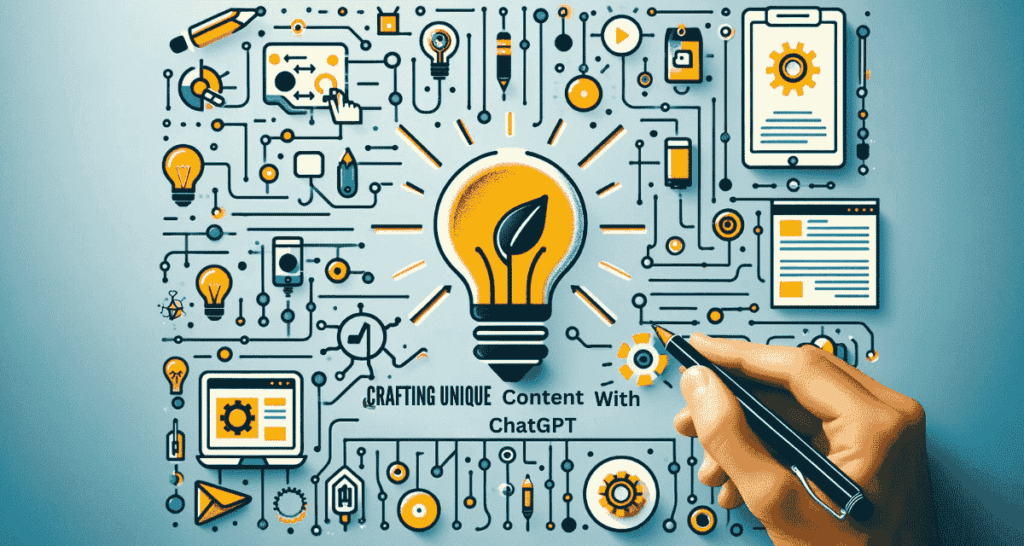
Creating unique content is important in standing out in the digital landscape. ChatGPT, with its AI capabilities, offers a novel approach to content creation. Here’s how you can leverage ChatGPT to craft content that not only engages but also captivates your audience with its uniqueness.
Identify Your Unique Angle
Prompt ChatGPT: “Can you provide a list of 10 unique and creative angles to approach the topic of [Your Topic]? Each angle should cater to a different audience or offer a fresh perspective that’s not commonly discussed.”
Why It Works: This helps you explore perspectives that haven’t been overdone. ChatGPT can provide a variety of viewpoints on any given topic, some of which might not have occurred to you.
Incorporate Data and Research
Prompt ChatGPT: “What are the latest key findings and breakthroughs in [Your Topic] as of [Year]? Please provide a summary of recent research, highlighting significant results, methodologies, and implications for the field.”
Why It Works: Adding fresh data or research findings can significantly enhance the originality of your content. ChatGPT can assist by summarizing complex studies, making them accessible to your audience.
Blend Multiple Ideas
Prompt ChatGPT: “I’m looking to create a new content concept by merging [Idea 1] and [Idea 2]. Can you suggest a detailed concept that integrates these ideas in a novel way, including potential themes, formats, and target audiences?”
Why It Works: Merging concepts or ideas can lead to innovative content that stands out. ChatGPT’s ability to process and integrate diverse information makes it an ideal tool for this task.
Create Interactive Content
Prompt ChatGPT:”Could you design an interactive quiz on the topic of [Your Topic] aimed at [Target Audience]? Please include a title, a brief introduction, 5 questions with multiple-choice answers, and a short explanation for each correct answer.”
Why It Works: Interactive content boosts engagement. ChatGPT can help draft quizzes, polls, or interactive stories that encourage audience participation.
Tell a Story
Prompt ChatGPT: “Can you write a compelling short story that encapsulates the essence of [Your Topic]? The story should be engaging, thought-provoking, and clearly convey the key themes associated with the topic.”
Why It Works: Storytelling can make your content more relatable and memorable. ChatGPT is adept at creating narratives that can highlight your message in an engaging way.
Predict Future Trends
Prompt ChatGPT:”What are the emerging trends in [Your Industry/Topic] that are likely to shape its future over the next five years? Please provide a detailed analysis of anticipated changes, innovations, and challenges, along with their potential impact on the industry.”
Why It Works: Offering insights into future trends can position you as a thought leader. ChatGPT’s ability to analyze patterns allows it to make educated guesses about future developments.
The Importance of Human Intervention in AI Content Creation
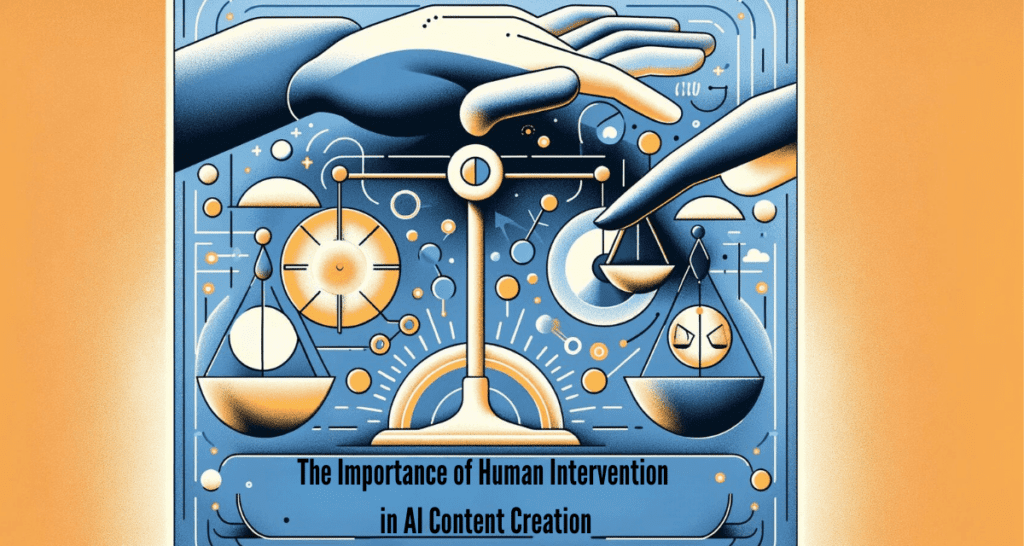
While ChatGPT and similar AI tools revolutionize content creation with their efficiency and innovation, the role of human intervention cannot be overstated. Integrating human insight and creativity into the AI content creation process is critical for producing content that is not only unique and engaging but also truly resonant with your audience. Here’s why human touch matters and how to effectively blend it with AI capabilities.
Ensuring Content Quality and Relevance
Human Insight: AI can generate content based on patterns and data, but human intervention is key to ensuring the content’s quality, relevance, and alignment with your brand’s voice and values.
Action Step: Review and refine AI-generated content to ensure it meets your standards and speaks directly to your audience’s needs and interests.
Adding Depth and Perspective
Creative Input: While AI can provide information, humans can add depth, emotion, and perspective, turning information into compelling stories or persuasive arguments.
Action Step: Infuse AI-generated drafts with personal anecdotes, expert insights, or unique viewpoints to enhance depth and engagement.
Navigating Ethical and Cultural Sensitivities
Cultural Competence: AI may not fully grasp cultural details or ethical considerations relevant to your audience. Human oversight is essential to navigate these sensitively and appropriately.
Action Step: Evaluate AI content for cultural and ethical sensitivity, ensuring it respects and resonates with diverse audiences.
Customizing Content for Specific Goals
Strategic Alignment: AI tools generate content based on input, but humans can create this content to align with specific marketing goals or audience actions.
Action Step: Adjust AI-generated content to support your strategic objectives, whether that’s driving conversions, enhancing SEO, or building brand awareness.
Maintaining Authenticity and Trust
Authentic Engagement: In an era where authenticity is highly valued, content that reflects genuine human experiences and emotions is more likely to build trust and loyalty.
Action Step: Personalize AI-generated content with your brand’s unique voice and stories that reflect genuine experiences or lessons learned.
Strategies to Make AI-Generated Content Google-Friendly
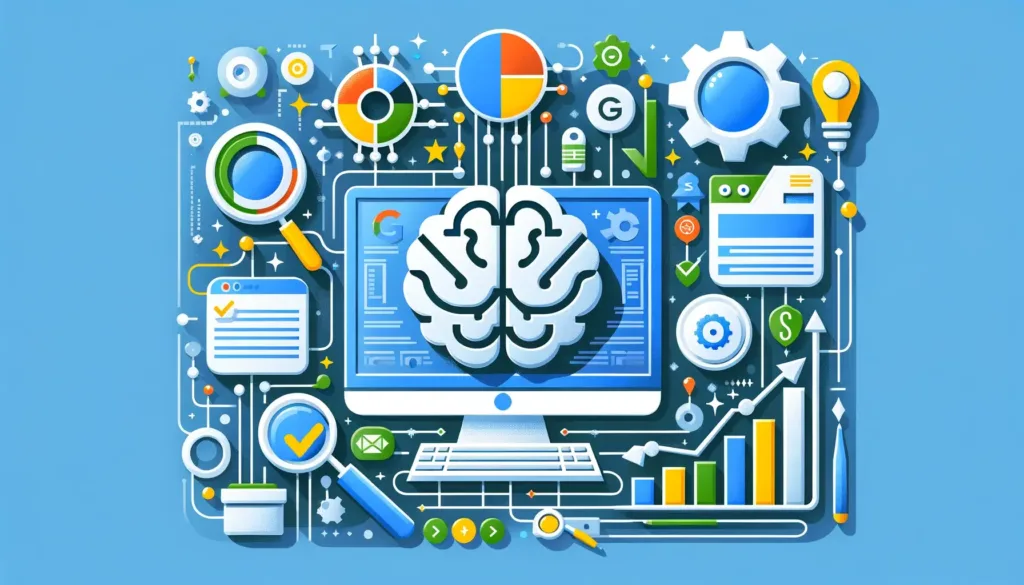
In the digital marketing world, making your content Google-friendly is vital for visibility and success. With the increasing use of AI tools like ChatGPT for content creation, it’s essential to ensure that this content aligns with Google’s guidelines to avoid penalties and maximize SEO benefits. Here are strategic approaches to ensure your AI-generated content remains on Google’s good side.
Focus on Quality and Value
Quality Over Quantity: Google values content that provides real value to readers. Ensure your AI-generated content is informative, well-researched, and offers unique insights.
Action Step: Use ChatGPT to draft content, then enrich it with detailed research, examples, and data to increase its value.
Ensure Originality
Avoid Duplication: Google penalizes duplicate content. While AI can generate content based on existing information, it’s crucial to add original thoughts, analysis, or findings to make it unique.
Action Step: After generating content with ChatGPT, revise it to include your original insights or unique data points that differentiate it from existing content on the web.
Incorporate E-A-T Principles
Expertise, Authoritativeness, Trustworthiness: Google’s E-A-T guidelines emphasize the importance of content quality and credibility, especially for YMYL (Your Money Your Life) topics.
Action Step: Review AI-generated content to ensure it aligns with E-A-T principles. Add credentials, cite reputable sources, and showcase expertise to bolster your content’s authority and trustworthiness.
Optimize for Keywords Strategically
Keyword Integration: While AI tools can optimize content for keywords, human oversight is necessary to ensure that keyword integration is natural and effective, avoiding keyword stuffing.
Action Step: Use ChatGPT to target specific keywords, but manually adjust the content to ensure keywords are integrated naturally and contextually.
Enhance Readability and Engagement
User-Friendly Content: Google favors content that’s easy to read and engaging. AI-generated content should be structured and presented in a way that enhances user experience.
Action Step: Structure AI-generated content with clear headings, short paragraphs, and bullet points. Add images, videos, or infographics to increase engagement.
Regular Updates and Refreshes
Content Freshness: Google appreciates up-to-date content. Regularly updating your content can improve its relevance and ranking.
Action Step: Use ChatGPT to periodically update your articles or blog posts with the latest information, trends, or data.
Conclusion: Embracing ChatGPT for Future Content Creation
As we navigate the evolving landscape of digital marketing, the integration of AI tools like ChatGPT into content creation processes marks a significant leap forward. These technologies offer unique opportunities to enhance efficiency, creativity, and engagement in content production. However, the journey doesn’t end with AI-generated text. The true magic happens when human insight, creativity, and strategic thinking guide and refine the capabilities of AI, ensuring content not only reaches but also resonates deeply with its intended audience.
The importance of maintaining a human touch in AI-assisted content creation cannot be overstated. It’s the blend of technological innovation and human empathy, creativity, and insight that will define the next era of digital content. By leveraging ChatGPT for the heavy lifting, content creators and digital marketers can devote more time to strategic planning, creative thinking, and personalizing content to meet the unique needs and preferences of their audience.
Author

Emma , our Word Weaver, spins words into compelling narratives. Her mastery lies in crafting content that not only informs but also engages, fostering a connection between your brand and your audience.
View all posts



